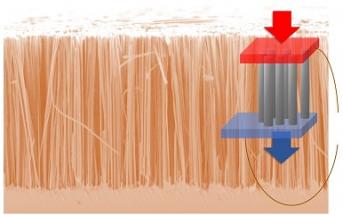
Thermoelectric materials allow direct conversion of heat into electricity without moving parts - a feature that makes thermoelectric generators extremely reliable and, at the same time, allows for their miniaturization, particularly useful to power low-consumption electrical devices. In this direction, a collaboration between the University of Pisa (Prof. Giovanni Pennelli and Drs. Elisabetta Dimaggio and Shaimaa Elyamny), and the Department of Materials Science of the University of Milano-Bicocca (Dr. Stefano Magagna and Prof. Dario Narducci), led to build a thermoelectric generator based on forests of silicon nanowires obtained by using low-cost chemical techniques. The work, published in Nano Letters ("High power thermoelectric generator based on vertical silicon nanowires" DOI: 10.1021/acs.nanolett.0c00227) demonstrates the possibility of generating electrical powers in the order of some hundreds of microwatt/cm2 over temperature differences smaller than 20 °C.
While it is now well assessed how silicon nanostructures are capable of conversion efficiencies comparable to conventional thermoelectric materials, power outputs have always been very low due to the low nanowire densities. The results reported in this paper are particularly momentous as they demonstrate how the use of nanotechnology not requiring lithographic steps enables substantial electric power outputs with competitive capital costs (euro/watts).
The generation of electrical powers of the order of milliwatts is of remarkable importance for applications ranging from biomedical devices to the Internet of Things.